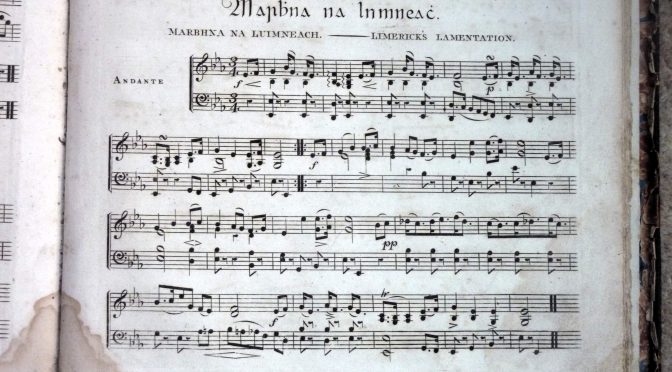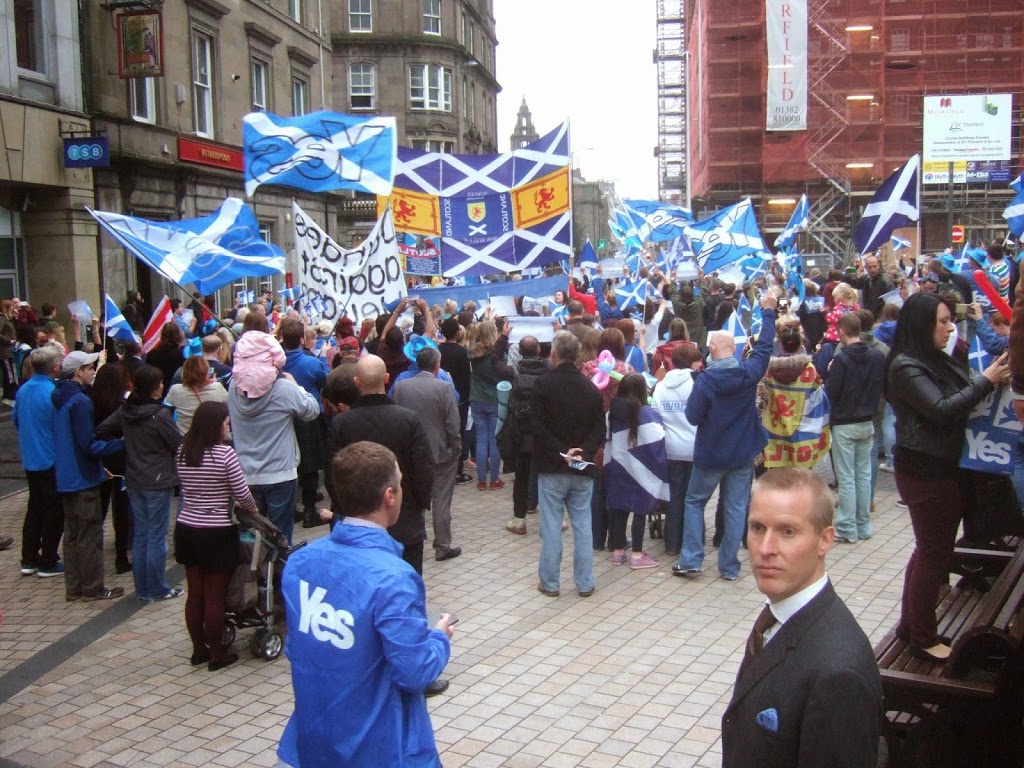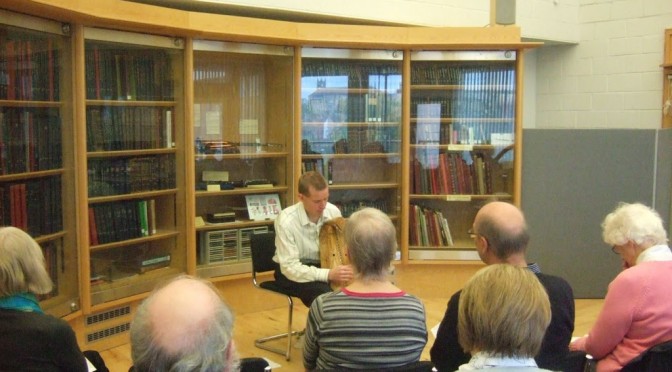For my 10-minute set in next Friday’s 1817 bicentenary concert, I have been thinking about what tunes to play, and how to approach them.
Tag: Lament
An Caoine Rioghaill – The Royal Lament
I was at Balgay parish church in Dundee today, presenting the replica Queen Mary harp and playing some old Scottish harp music. One elderly gentleman who was a member of the church guild and a piper was unable to attend but had sent in a question, saying he knew of a pipe tune which was a lament for the King, and which he believed was traditionally said to have been composed by an old harper out West.
In Dundee on the eve of the Referendum
Last night we went to Dundee, as I was performing my concert on board the Unicorn. We travelled in early just so we could have an hour or so wandering around the centre of town to see if anything was happening.
In city square there were perhaps a thousand people with flags and music, very peaceful and friendly, lots of family groups. They organised a procession around the block, so we followed on at the end.
We left the gathering and headed down to the docks. The Unicorn is a really beautiful ship, genuinely old and not over-manicured like many historical things. On board, the captains cabin had been cleared and was set with chairs; the wine was laid out on a table ouside the cabin entrance, on the main deck. The ceilings on board are very low!
As it got dimmer, people started arriving. There was not a huge turnout, but the low ceilings and the homely atmosphere of the ship seemed to draw people out; everyone was talking to each other in unexpected intimacy.
For the first half of the concert, I played a selection of 18th century music, from the pibroch Maol Donn to the breezy baroque Blossom of the Raspberry. My fiddle tune went OK and was well received – especially with the story about it.
In the interval everyone went into the main deck for wine and conversation. This went on for quite a long time!
Then for the second half I played the Lament for the Union set. People were interested and sympathetic to the sentiments – it felt like a historic moment, thinking about the beginning of the Union in 1707, on the eve of the historic referendum to undo it. Especially with the evening glow from the docks through the windows…
Walking back up through the town late at night to the bus station to catch our ride home, we saw a battle of the billboards. Looks like Yes is winning this one!
Lament for the Union recording
I have recorded the Lament for the Union programme and I am putting it out as a handmade CD single!
http://www.earlygaelicharp.info/union/ will get you the details as well as a sample track.
It’s not officially released until 1st July, but I have made up some pre-release copies to take along to tomorrow morning’s performance, 11.30am at Cupar Corn Exchange.
Concerts on the West Coast
At the end of this week I am performing a couple of concerts in the West Highlands, presenting my new programme of Old Gaelic Laments as premiered (in slightly trimmed form) in Dundee yesterday.
On Thursday night, I will be at Dunollie, just outside of Oban. The seat of Clan MacDougall, Dunollie has been the scene of recent restoration and my event is to be an exclusive evening in the 1745 house. Fore more info about the house and the recent restoriation work there, please see www.dunollie.org
On Friday I’ll be further north, in Acharacle on the Ardnamurchan peninsula. This is one of the most beautiful parts of the Highlands and I’ll be performing in the community hall.
Both events start at 7.30pm. Full details are on my forthcoming events page.
Dundee Wighton concert photo
Tristan’s Lament
This is Lamento di Tristano as played at last Tuesday’s concert of heroic music. A fitting elegy for a fine harper, lover and hero.
I’m also experimenting with a new audio recording setup – hope you like the sound.
Old Gaelic Laments: concerts in October
Historical harp specialist Simon Chadwick is performing a series of concerts of old Gaelic laments around Scotland in October.
Performed on a unique and beautiful decorated replica of a medieval West Highland clarsach, the concerts will uncover unusual and little known treasures of old Scottish music.
The concerts focus on laments, composed by the old Gaelic harpers to commemorate famous people or to express sorrow and longing. From grand, formal memorial pieces for bishops and noblemen, to complex and subtle bagpipe-style variation sets, to personal expressions of loss, the music ranges across the emotions including anger, grief and love.
The clarsach used for Simon’s concerts is an important art object in its own right. Commissioned in 2006, it is the most accurate and detailed replica yet made, of the “Queen Mary harp”, a medieval West Highland clarsach now considered a national treasure and preserved and displayed in Edinburgh in the National Museum of Scotland. The replica harp copies every last detail of the medieval original, including the fantastically intricate designs of mythical beasts, interlace and plants, which are carved, inked and painted onto the wooden parts of the harp.
Simon Chadwick is based in the medieval university town of St Andrews, and specialises in the medieval and Renaissance harp music of Scotland and Ireland. His music is based on years of studying the old music, techniques and idioms preserved in old books and manuscripts.
As well as performing concerts with the replica harp, Simon teaches regular classes in Dundee and Edinburgh, and is Assistant Director of the main international summer school for historical Gaelic harp music, held every August in Kilkenny, Ireland. Previous concerts presented by Simon include gallery recitals in the National Museum of Scotland beside the original Queen Mary harp and a regular series of medieval concerts for Historic Scotland, in the ruins of St Andrews Cathedral and Arbroath Abbey.
Simon has written two method books for historical harp music, and has also released a CD featuring the Queen Mary harp and music connected to it, “Clarsach na Banrighe”. He is currently working on his next CD which is focussed on the old Gaelic laments.
For more information including photos, bio, and sample tracks, please visit http://www.simonchadwick.net/
Saturday 22nd October, 10.30am – Wighton Centre, Dundee
Thursday 27th October, 7.30pm – Dunollie Castle, near Oban
Friday 28th October, 7.30pm – Shielbridge Hall, Acharacle










